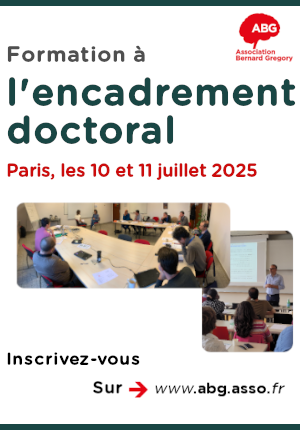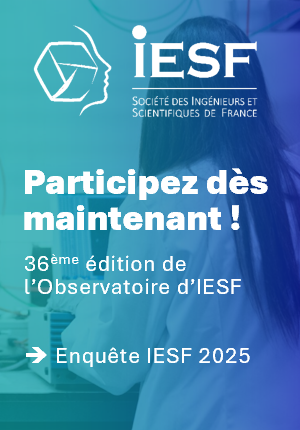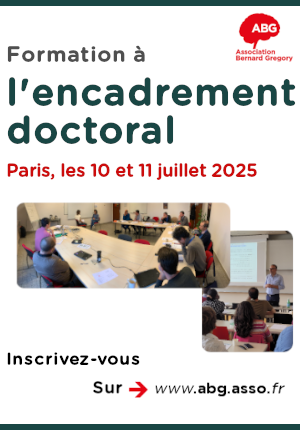Etude des sursauts gamma orphelin avec les premières données de l'observatoire Vera C. Rubin // Study of orphan gamma-ray burst with the first data of the Vera C. Rubin Observatory
|
ABG-130911
ADUM-65028 |
Sujet de Thèse | |
| 11/04/2025 | Contrat doctoral |
Université Grenoble Alpes
Grenoble cedex - France
Etude des sursauts gamma orphelin avec les premières données de l'observatoire Vera C. Rubin // Study of orphan gamma-ray burst with the first data of the Vera C. Rubin Observatory
- Terre, univers, espace
astrophysique, sursauts gamma, télescope optique
astrophysics, gamma-ray bursts, optical telescope
astrophysics, gamma-ray bursts, optical telescope
Description du sujet
Les sursauts gamma comptent parmi les évènements les plus violents de l'univers, et se traduisent par des bouffées très intenses de
photons gamma pour une durée allant de quelques secondes à quelques jours, pour des énergies allant du keV au TeV. Cette émission gamma est essentiellement due à un jet de particules relativiste extrêmement collimaté et n'est donc visible que lorsque ce jet pointe en direction de l'observateur. Par de simples considérations géométrique, lorsque ce jet est vu à grand angle, les modèles prévoient que l'émission à plus basse énergie (domaines optiques et radios) devraient être observable sous la forme de phénomènes transitoires lents et de faible luminosité. Ce phénomène est baptisé sursaut gamma orphelin ou émission rémanente orpheline, car on n'observe pas la composante gamma, mais uniquement l'émission optique ou radio. A ce jour, aucun phénomène transitoire n'a pu être identifié de manière certaine en tant que sursaut gamma orphelin, mais les modèles d'émission prévoient que plusieurs dizaines de tels évènements devraient être observés dans les données du Rubin-LSST chaque année.
L'observatoire Vera C. Rubin, installé sur le Mont Pachon au Chili, s'apprête à réaliser la cartographie la plus détaillée de l'ensemble du ciel austral pendant une durée de 10 ans, baptisé LSST (Large Synoptic Survey of Space and Time). Pour cela, l'observatoire est équipé d'un télescope à très grand champ de vue, plus de 27 fois la lune, et de la plus grande caméra numérique au monde : 3,2 milliards de pixels. L'observatoire prend en ce moment même ses premières images sur le ciel, le début du relevé LSST est prévu dès cet automne.
Le travail de thèse commencera de manière très concrète par la prise en main puis l'optimisation du module scientifique pour l'identification des candidats sursauts orphelins développé dans le cadre de la thèse précédente : il s'agira d'adapter le module aux premières vraies données du LSST. Une fois le module optimisé, il sera indispensable de mettre en place une stratégie de suivi des candidats dans un cadre multi-longueur d'onde et multi-messager, afin de pouvoir confirmer de manière certaine leur vraie nature et les caractériser proprement. La découverte d'un ou plusieurs sursauts gamma orphelins donnera accès à des considérations astrophysiques et/ou cosmologiques en fonction des données recueillies.
L'arrivée des premières données du LSST sera par ailleurs une immense occasion pour le doctorant ou la doctorante de s'impliquer dans le commissioning de l'instrument via une contribution à la caractérisation de la structure du fond de ciel des images, sujet fortement lié à l'identification des évènements transitoires. En effet, les nombreuses images sur le ciel déjà acquises à l'automne avec la caméra de commissioning montrent à la fois la présence d'images fantômes dues aux étoiles brillantes du champ et les limites des algorithmes d'estimation du fond de ciel paramétrés sur les simulations. Le travail proposé consistera à étudier les fantômes présents dans les images de la caméra, avec pour but l'amélioration des méthodes correctives, ce qui passera par la production de simulations optiques avec les logiciels de l'observatoire. L'activité sera ensuite étendue aux algorithmes de soustraction de fond de ciel. Ce travail sera réalisé en forte collaboration avec le groupe de travail Data Management du projet Rubin.
------------------------------------------------------------------------------------------------------------------------------------------------------------------------
------------------------------------------------------------------------------------------------------------------------------------------------------------------------
Gamma-ray bursts (GRBs) are among the most violent events in the Universe, resulting in very intense bursts of gamma-ray photons with durations from seconds to days, and energies ranging from keV to TeV. This gamma-ray emission is primarily due to an extremely collimated relativistic jet of particles and is therefore only visible when this jet points towards the observer. Based on simple geometric considerations, when this jet is viewed at a large angle, models predict that lower-energy emission (optical and radio domains) should be observable as slow, low-luminosity transient phenomena. This phenomenon is called an orphan GRB or orphan afterglow emission, because the gamma-ray component is not observed, only the optical or radio emission. To date, no transient phenomenon has been definitively identified as an orphan GRB, but emission models predict that several tens of such events should be observed in the Rubin-LSST data each year.
The Vera C. Rubin Observatory, located on Cerro Pachón in Chile, is preparing to conduct the most detailed mapping of the entire southern sky over a period of 10 years, called LSST (Large Synoptic Survey of Space and Time). For this, the observatory is equipped with a very wide field-of-view telescope, more than 27 times the size of the Moon, and the largest digital camera in the world: 3.2 billion pixels. The observatory is currently taking its first images of the sky; the start of the LSST survey is planned for this autumn.
The PhD work will begin very concretely with the familiarization and optimization of the scientific module for the identification of orphan GRB candidates developed within the framework of the previous thesis: this will involve adapting the module to the first real data from the LSST. Once the module is optimized, it will be essential to establish a follow-up strategy for the candidates in a multi-wavelength and multi-messenger framework, in order to definitively confirm their true nature and properly characterize them. The discovery of one or more orphan GRBs will provide access to astrophysical and/or cosmological considerations depending on the collected data.
The arrival of the first LSST data will also be a tremendous opportunity for the doctoral student to get involved in the commissioning of the instrument through a contribution to the characterization of the sky background structure of the images, a topic strongly related to the identification of transient events. Indeed, the numerous images of the sky already acquired in the autumn with the commissioning camera show both the presence of ghost images due to bright stars in the field and the limitations of the sky background estimation algorithms parameterized on simulations. The proposed work will consist of studying the ghosts present in the camera images, with the aim of improving the corrective methods, which will involve the production of optical simulations using the observatory's software. The activity will then be extended to sky background subtraction algorithms. This work will be carried out in strong collaboration with the Data Management working group of the Rubin project.
------------------------------------------------------------------------------------------------------------------------------------------------------------------------
------------------------------------------------------------------------------------------------------------------------------------------------------------------------
Début de la thèse : 01/10/2025
WEB : https://rubinobservatory.org/
photons gamma pour une durée allant de quelques secondes à quelques jours, pour des énergies allant du keV au TeV. Cette émission gamma est essentiellement due à un jet de particules relativiste extrêmement collimaté et n'est donc visible que lorsque ce jet pointe en direction de l'observateur. Par de simples considérations géométrique, lorsque ce jet est vu à grand angle, les modèles prévoient que l'émission à plus basse énergie (domaines optiques et radios) devraient être observable sous la forme de phénomènes transitoires lents et de faible luminosité. Ce phénomène est baptisé sursaut gamma orphelin ou émission rémanente orpheline, car on n'observe pas la composante gamma, mais uniquement l'émission optique ou radio. A ce jour, aucun phénomène transitoire n'a pu être identifié de manière certaine en tant que sursaut gamma orphelin, mais les modèles d'émission prévoient que plusieurs dizaines de tels évènements devraient être observés dans les données du Rubin-LSST chaque année.
L'observatoire Vera C. Rubin, installé sur le Mont Pachon au Chili, s'apprête à réaliser la cartographie la plus détaillée de l'ensemble du ciel austral pendant une durée de 10 ans, baptisé LSST (Large Synoptic Survey of Space and Time). Pour cela, l'observatoire est équipé d'un télescope à très grand champ de vue, plus de 27 fois la lune, et de la plus grande caméra numérique au monde : 3,2 milliards de pixels. L'observatoire prend en ce moment même ses premières images sur le ciel, le début du relevé LSST est prévu dès cet automne.
Le travail de thèse commencera de manière très concrète par la prise en main puis l'optimisation du module scientifique pour l'identification des candidats sursauts orphelins développé dans le cadre de la thèse précédente : il s'agira d'adapter le module aux premières vraies données du LSST. Une fois le module optimisé, il sera indispensable de mettre en place une stratégie de suivi des candidats dans un cadre multi-longueur d'onde et multi-messager, afin de pouvoir confirmer de manière certaine leur vraie nature et les caractériser proprement. La découverte d'un ou plusieurs sursauts gamma orphelins donnera accès à des considérations astrophysiques et/ou cosmologiques en fonction des données recueillies.
L'arrivée des premières données du LSST sera par ailleurs une immense occasion pour le doctorant ou la doctorante de s'impliquer dans le commissioning de l'instrument via une contribution à la caractérisation de la structure du fond de ciel des images, sujet fortement lié à l'identification des évènements transitoires. En effet, les nombreuses images sur le ciel déjà acquises à l'automne avec la caméra de commissioning montrent à la fois la présence d'images fantômes dues aux étoiles brillantes du champ et les limites des algorithmes d'estimation du fond de ciel paramétrés sur les simulations. Le travail proposé consistera à étudier les fantômes présents dans les images de la caméra, avec pour but l'amélioration des méthodes correctives, ce qui passera par la production de simulations optiques avec les logiciels de l'observatoire. L'activité sera ensuite étendue aux algorithmes de soustraction de fond de ciel. Ce travail sera réalisé en forte collaboration avec le groupe de travail Data Management du projet Rubin.
------------------------------------------------------------------------------------------------------------------------------------------------------------------------
------------------------------------------------------------------------------------------------------------------------------------------------------------------------
Gamma-ray bursts (GRBs) are among the most violent events in the Universe, resulting in very intense bursts of gamma-ray photons with durations from seconds to days, and energies ranging from keV to TeV. This gamma-ray emission is primarily due to an extremely collimated relativistic jet of particles and is therefore only visible when this jet points towards the observer. Based on simple geometric considerations, when this jet is viewed at a large angle, models predict that lower-energy emission (optical and radio domains) should be observable as slow, low-luminosity transient phenomena. This phenomenon is called an orphan GRB or orphan afterglow emission, because the gamma-ray component is not observed, only the optical or radio emission. To date, no transient phenomenon has been definitively identified as an orphan GRB, but emission models predict that several tens of such events should be observed in the Rubin-LSST data each year.
The Vera C. Rubin Observatory, located on Cerro Pachón in Chile, is preparing to conduct the most detailed mapping of the entire southern sky over a period of 10 years, called LSST (Large Synoptic Survey of Space and Time). For this, the observatory is equipped with a very wide field-of-view telescope, more than 27 times the size of the Moon, and the largest digital camera in the world: 3.2 billion pixels. The observatory is currently taking its first images of the sky; the start of the LSST survey is planned for this autumn.
The PhD work will begin very concretely with the familiarization and optimization of the scientific module for the identification of orphan GRB candidates developed within the framework of the previous thesis: this will involve adapting the module to the first real data from the LSST. Once the module is optimized, it will be essential to establish a follow-up strategy for the candidates in a multi-wavelength and multi-messenger framework, in order to definitively confirm their true nature and properly characterize them. The discovery of one or more orphan GRBs will provide access to astrophysical and/or cosmological considerations depending on the collected data.
The arrival of the first LSST data will also be a tremendous opportunity for the doctoral student to get involved in the commissioning of the instrument through a contribution to the characterization of the sky background structure of the images, a topic strongly related to the identification of transient events. Indeed, the numerous images of the sky already acquired in the autumn with the commissioning camera show both the presence of ghost images due to bright stars in the field and the limitations of the sky background estimation algorithms parameterized on simulations. The proposed work will consist of studying the ghosts present in the camera images, with the aim of improving the corrective methods, which will involve the production of optical simulations using the observatory's software. The activity will then be extended to sky background subtraction algorithms. This work will be carried out in strong collaboration with the Data Management working group of the Rubin project.
------------------------------------------------------------------------------------------------------------------------------------------------------------------------
------------------------------------------------------------------------------------------------------------------------------------------------------------------------
Début de la thèse : 01/10/2025
WEB : https://rubinobservatory.org/
Nature du financement
Contrat doctoral
Précisions sur le financement
Concours pour un contrat doctoral
Présentation établissement et labo d'accueil
Université Grenoble Alpes
Etablissement délivrant le doctorat
Université Grenoble Alpes
Ecole doctorale
47 PHYS - Physique
Profil du candidat
Compétences métier/savoir faire
- Connaissance des processus physiques à haute énergie (synchrotron, Compton, ...)
- Connaissance des jets relativistes en tant qu'objets astrophysiques
- Bases en astronomie dans le domaine optique
- Environnement scientifique python (matplotlib, numpy, pandas, astropy, scipy)
Savoir être
- Motivation
- Curiosité et créativité
- Travail en équipe
- Communication
Trade skills/ expertise - Knowledge of high energy physics processes (synchrotron, Compton, ...) - Knowledge of relativistic jets as astrophysical objects - Basics of optical domain astronomy - Python-based data science framework (matplotlib, numpy, pandas, astropy, scipy) Personal skills - Motivation - Curiosity and creativity - Team work - Communication
Trade skills/ expertise - Knowledge of high energy physics processes (synchrotron, Compton, ...) - Knowledge of relativistic jets as astrophysical objects - Basics of optical domain astronomy - Python-based data science framework (matplotlib, numpy, pandas, astropy, scipy) Personal skills - Motivation - Curiosity and creativity - Team work - Communication
11/05/2025
Postuler
Fermer
Vous avez déjà un compte ?
Nouvel utilisateur ?
Besoin d'informations sur l'ABG ?
Vous souhaitez recevoir nos infolettres ?
Découvrez nos adhérents
 MabDesign
MabDesign  Groupe AFNOR - Association française de normalisation
Groupe AFNOR - Association française de normalisation  Laboratoire National de Métrologie et d'Essais - LNE
Laboratoire National de Métrologie et d'Essais - LNE  ONERA - The French Aerospace Lab
ONERA - The French Aerospace Lab  ANRT
ANRT  CESI
CESI  ASNR - Autorité de sûreté nucléaire et de radioprotection - Siège
ASNR - Autorité de sûreté nucléaire et de radioprotection - Siège  PhDOOC
PhDOOC  Institut Sup'biotech de Paris
Institut Sup'biotech de Paris  SUEZ
SUEZ  Nokia Bell Labs France
Nokia Bell Labs France  Aérocentre, Pôle d'excellence régional
Aérocentre, Pôle d'excellence régional  TotalEnergies
TotalEnergies  Tecknowmetrix
Tecknowmetrix  MabDesign
MabDesign  ADEME
ADEME  Ifremer
Ifremer  Généthon
Généthon  CASDEN
CASDEN





